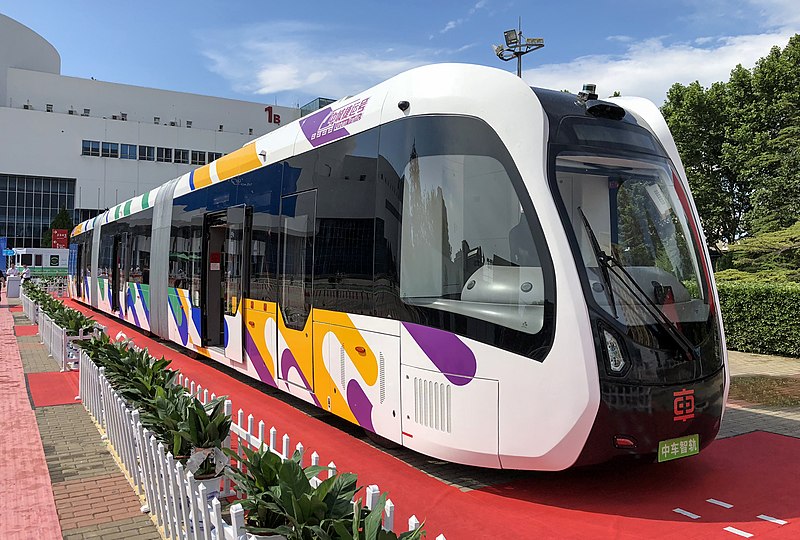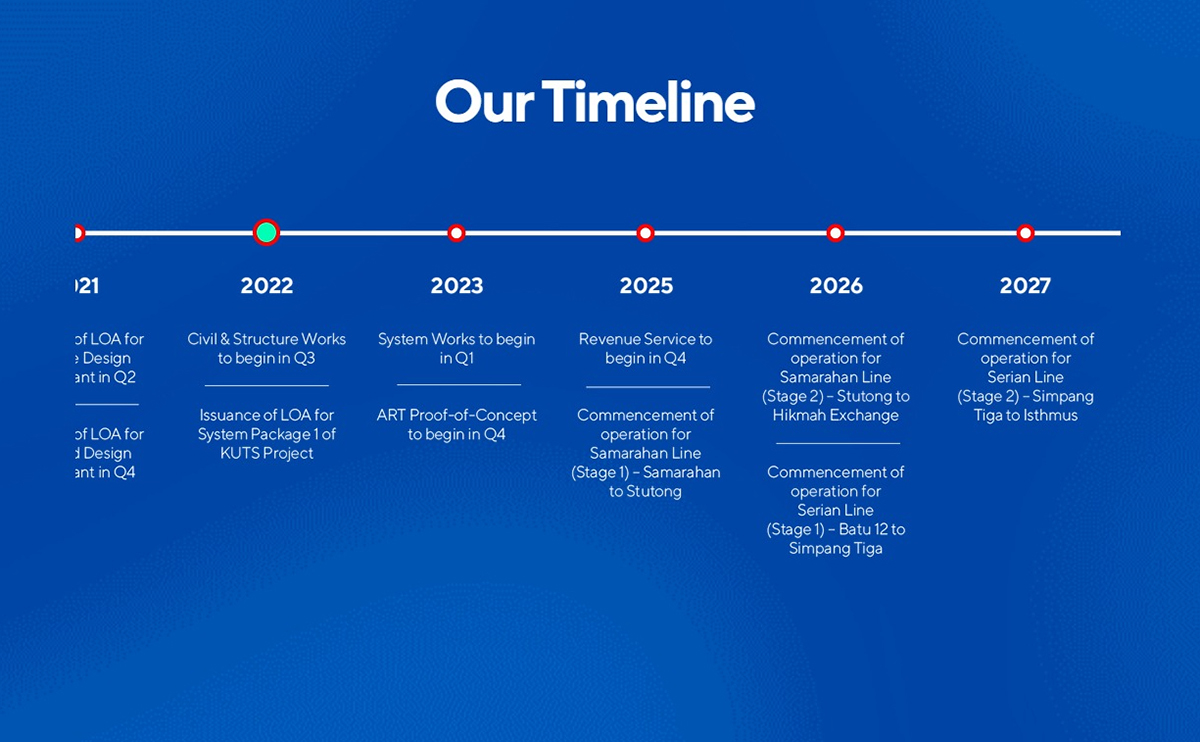The company says ART revenue services in Kuching are slated to begin during the fourth quarter of 2025. Should this be achieved, the service would hold the record of being the world’s first transit system of its class to be powered by hydrogen fuel cells – an eco-friendly and renewable energy source which the state of Sarawak has been championing as part of its aim of progressing into a low carbon future. For those unfamiliar, ART is an autonomous medium capacity transit system for urban areas that is developed by China’s CRRC Zhuzhou Institute Co Ltd. Rather than using trains or actual rails, the system utilises a three-carriage “guided bus” which is capable of transporting over 300 passengers and relies on built-in LiDAR technology to scan virtual tracks on the road for autonomous navigation. It is designed to operate on clean sources of energy such as electricity or hydrogen, and could travel up to 70km/h. An ART “guided bus” [Photo: N509FZ/Wikimedia]KUTS (pronounced as “cuts,” by the way) will consist of three colour coded ART routes: the Red Line, which will feature eight stations starting from Kuching Sentral to Pending; the Blue Line, with 15 stations starting from Rembus to Hikmah Exchange; and the Green Line, with 10 stations starting from Pending to Damai Central. The Red Line covers about 12.3 km in length, the Blue Line at about 27.6 km, while the Green Line covers about 30 km. All of which, as mentioned earlier, totals at about 69.9 km of coverage. Based on the new map provided by Sarawak Metro, the Red and Blue lines will intersect at a future interchange station in Simpang Tiga, while the former will also intersect with the Green Line in the Pending district. The company adds that Phase 1 of the KUTS project is scheduled to commence gradually starting from Q4 2025, and will consist of the construction and operation of the Red and Blue lines. On a related note, Sarawak Premier Abang Johari prior to this has also expressed interest in introducing a second ART system in Bintulu, which is proposed to be constructed in five years time. (Source: Sarawak Metro [official website], via Paultan / Kuchingborneo.info)

